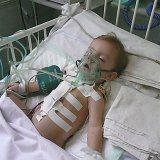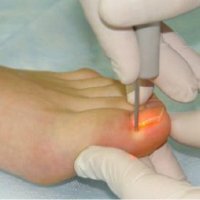What to do after tooth extraction: Recommendations for care
Every person in his life went through an amputation of the tooth, who is in childhood, who is in the adult.Often after the procedure, unpleasant complications arise: infection and inflammation of the lana, bleeding holes, bruising, swelling and redness of soft tissues, suppuration, etc.In this article, we will consider what to do after pulling the tooth to the patient, how to avoid side effects and re-treating the area.We will also give recommendations on how to properly care for the area in various situations.
General recommendations
In this subsection, we will review all the important steps that the patient should take after tooth extraction.
- There is still a gauze compress on the hole. In fact, to place on a fresh wound cotton wool or gauze the dentist will only in case she is krovit.In other situations, the wound should not be covered by whatever material it is, since when it is removed the clot forming that closes the hole can also be removed.This will lead to a reopening of the wound and the possible introduction of infection, the development of inflammatory processes.If after the procedure there is a gauze or a cotton compress left in the mouth, gently remove it, because the blood soaked material becomes a source of bacteria and microbes.
If the material is tightly attached to the wound, you can not pull and tidy up, because you can tear off the same clot.Soak the area with chlorhexidine, and then carefully remove the application.
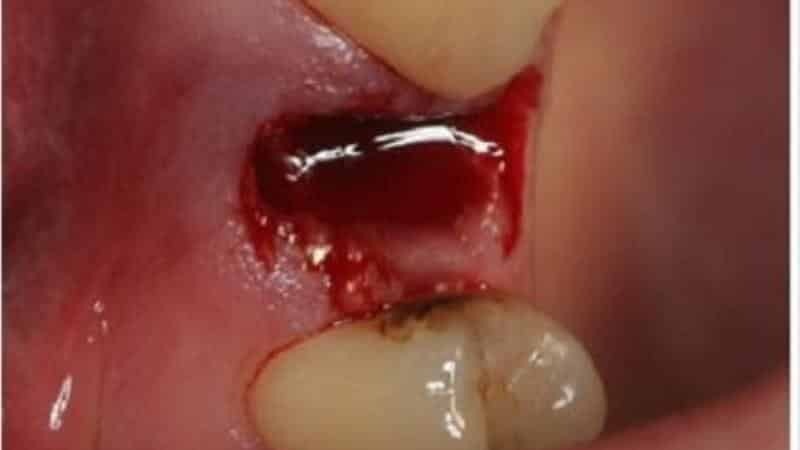
Well immediately after removal of the tooth
- Remove the pain syndrome .In many, after amputation, the area aches, pulls and causes discomfort.To facilitate the situation will help apply the cooled object( coin, ice bottle, frozen berries or meat, just a piece of ice).A cold object should be wrapped in a thin towel and attached to the cheek in the area where the pain is felt.This will also help to avoid edema of the zone after a complex treatment.Ice should be applied to 3 sets and hold no more than 5 minutes, then make the same break.
- Eating food. First 5-6 hours or longer after the procedure try to refrain from eating.During the day try to eat food at room temperature or slightly cool, but in any case not hot soups or meat.The liquid can be consumed immediately after removal, but only warm or cool.Try to avoid sharp, salty, acidic and strongly sweet foods, which can cause irritation of the area.
- Smoking, drinking alcohol. As for alcohol consumption, the first day should be abstained, otherwise the vessels may widen and the wound will begin to heal.Also, alcohol is prohibited in the case of antibiotic therapy.You can smoke several hours after the procedure.Remember, nicotine weakens the natural protection of soft tissues, making them more vulnerable to infection.
- Removal of seams. As a rule, the surgeon will remove the stitches one week after the procedure.In some cases, the material dissolves itself in 10-12 days.
- Treatment of the oral cavity. If the amputation of the tooth was part of the treatment of others or the oral cavity as a whole, then you can continue the manipulation in a week.In case of difficult removal, it may take longer to heal the area.
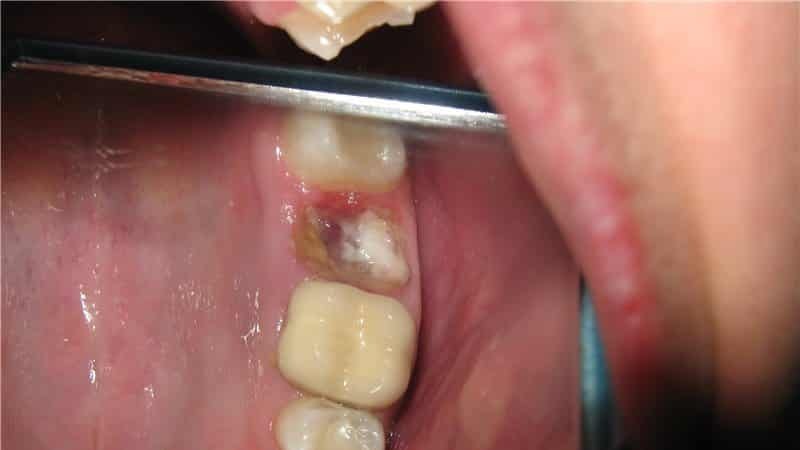
Well after tooth extraction in the normally healing healing phase
Do not do after tooth extraction:
- visit the sauna or steam bath, soak in a hot tub( only a warm shower);
- doing sports, lifting weights;
- to be nervous and worried( bleeding may occur on a background of stress);
- crawl into the mouth with dirty hands;
- touch the hole with your fingers, tongue, objects;
- brush your teeth in the area;
- in the case of stitching is forbidden to open your mouth wide and chew actively;
- aggressively rinse your mouth, as the funds can rinse out a blood clot, which in turn can cause the alveolitis.
Drug administration after removal of
Only a surgeon can prescribe a prescription for antibiotics in the following situations:
- complex dental treatment in the area;
- complex removal;
- development of inflammation in the zone, infection of the well, suppuration;
- appearance of background diseases of the oral cavity( glossitis, stomatitis, candidiasis, etc.);
- possible complications due to poor immunity, the presence of concomitant diseases.
As a rule, the dentist appoints oral capsules of Lincomycin, or Metronidazole.The medication intake lasts no less than 5 days.
In case of severe suppuration or infection, antibiotics are given in the form of injections, which are carried out for a week.
Anesthetics are also prescribed in some cases, usually against the backdrop of inflammatory processes or immediately after a complex removal.Nurofen is allowed to take it on its own right at the time of anesthesia.Stronger drugs with side effects, such as Ketanov, are only available on prescription.
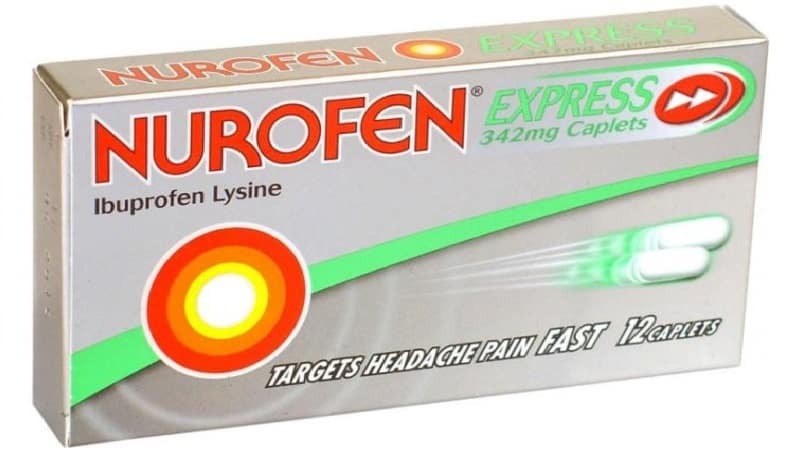
Drug Nurofen
If a patient has hypertension, be sure to take the prescription in case of increased pressure.Otherwise, it can develop bleeding of the wound or even the appearance of bruising, which can fester and cause a mini abscess.
Diabetics should always measure the sugar level.Stress and stress after the procedure can stimulate the production of adrenaline, which affects the patient's well-being.
Oral hygiene
After the procedure, it is immediately forbidden to rinse the oral cavity and clean the teeth.Begin to carry out the usual procedures for the next day.
To clean the teeth, brush with a soft bristle, carefully avoiding entering the villus in the hole.Do not use irrigators, flosses and rinse aid in the disposal area.

For the first 2 days, it is forbidden to rinse the mouth with either
. As for the hygiene of the well, the primary disinfection and purification is obtained in the dentist's office.Then the first 2 days are forbidden to rinse your mouth than either, you can stop on the baths and appliques.
The following procedure is considered to be effective:
- dial into the mouth a rinse aid( a medicinal conditioner, cooled decoction of herbs, a saline-soda solution, etc.);
- Hold fluid in your mouth for no more than 3 minutes without performing rolling movements;
- refrain from eating food and drink for 1-2 hours.
Use this method if you suspected the onset of the inflammatory process, noticed a bruise, bleeding hole.Also, rinsing is necessary in case of caries, pulpitis, gingivitis, periodontitis and other diseases in the oral cavity.Effective antiseptic baths from chlorhexidine or furicillin at dissection of the abscess, infection of the hole, suppuration of the area.
Normal and pathological processes after the procedure
Before you do anything after tooth extraction, establish what phenomena are considered normal and which indicate a complication.Do not rush to use all improvised means and medications at the slightest discomfort in the area, because you can simply harm the body, weaken the natural protection of the wound.
So, let's look at how the zone can behave after the procedure.
- A couple of hours after amputation, the socket along with the gum can whine, ache, and swell.Primary edema can easily be removed by applying cold.
- The maximum edema of the area may appear even on the 3rd day.Also, it is often accompanied by blueing in the zone( bruises, bruises).As a rule, both edema and bruises will pass independently for a couple of days.
- The morbidity of the hole is a consequence of the mini-operation on it.You can cool the area and apply prescribed pain medications.The soreness of the gums should subside every day.
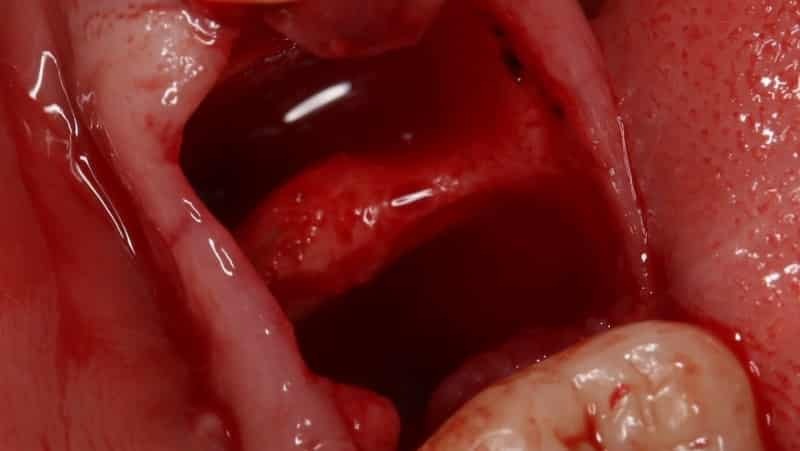
Bleeding in the first hours is absolutely normal
- Bleeding in the first hours is absolutely normal.Also you can notice bloody inclusions in the saliva for a couple of days.In the case of high blood pressure, sports, stress, stress at work and alcohol consumption, bleeding may last longer.
- It is possible to dry out the corners and the surface of the lips, which leads to their cracking and discomfort.You can moisturize the area with a fat cream or petroleum jelly.Also, after removal, herpes can become worse.
- After a complicated removal, the norm can be considered a slight temperature jump, sore throat, weakness and apathy, headache, aching muscles, development of colds.All these symptoms indicate a weakened immunity due to the stress experienced.
- Many patients also complain that the first 2-3 days can not open their mouths wide.A small swelling and soreness simply does not allow it to be made fully, so you should not worry.
We examined what should and should not be done after tooth extraction. Now let's look at the signs of complications, upon detection of which you should immediately contact the hospital.
- Pain lasts for several days and is not removed by anesthetics.
- Bleeding continues the next day after the procedure.Blood is characterized by a scarlet shade.
- Swelling has spread to the jaw and cheek, which prevents the patient from eating, communicating, or complying with mandatory oral hygiene.
- Numbness of the area, which lasts for several days.It is possible that the temperature and taste buds are not functioning properly.
- High temperature, which lasts more than 24 hours.
- Necrosis of tissues( blackening), formation of whitish coating, purulent plugs, etc. are observed on the surface of the well.
- A characteristic smell of putrefaction, pus appeared from the mouth.
- The seams applied by the dentist have split.
- The mobility of adjacent teeth is noticeable.
With normal removal, simple requirements are sufficient.In the case of a complicated variant, the patient should keep the situation under control and, at the appearance of unhealthy symptoms, immediately go to the doctor.

